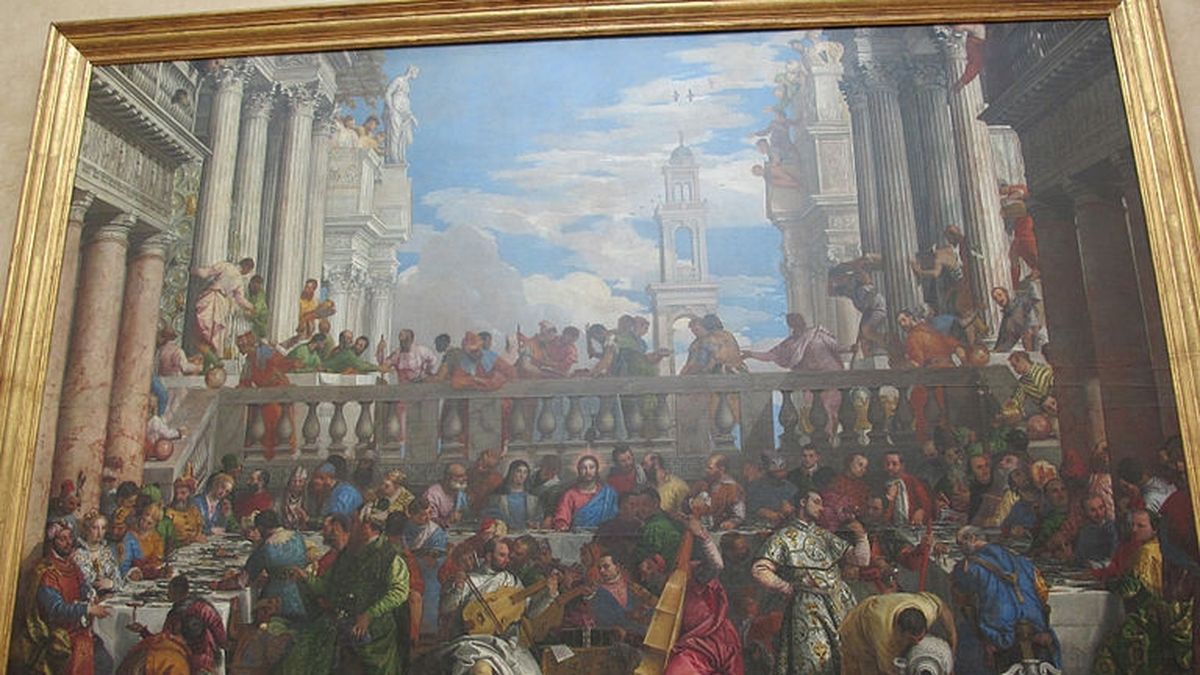 Wedding at Cana, Louvre museum | ©Sailko / CC-BY-SA
Wedding at Cana, Louvre museum | ©Sailko / CC-BY-SA12 Cistercian monks who came from Limousin founded the abbey in 1123: they called it locus dei, which means "God's place"!
The monastery was protected by bishop of Rodez and enriched by local lords. The Loc became prosperous and the Romanesque church was raised in 1160. The English plundered it during Hundred Years War, so the abbot decided to rebuild the cloister and the chapter room at the end of the 15th century.
But he also decided to transform the abbey into a real fortress flanked by machicolation towers. Monks had now a real castle: they could face wars of religion but when the French Revolution came, things changed...
The Loc was sold and transformed into a farm. Fortunately, mayor of Villefranche, Louis Cibiel, owned the abbey in 1812: he started to restore it.
In 1880, he laid out a vast landscaped garden surrounding the monastery.
In 1940, did you know they hid master-pieces from Louvre museum in the abbey? The Mona Lisa and The Marriage at Cana were hidden here...
By the way, come here: we can visit the 12th century church. Do you see that? On one of the keystone, we can see two blazons. One belongs to count of Toulouse, Alphonse II, who visited the abbey just before crusades. The other one belongs to Philip the Fair, because he protected the Loc in 1311.
Then, we can see the cloister, destroyed by the English in 1409 then rebuilt in 1470 by abbot Etienne de Firminhac. Finally, the chapter room, ruined by English but restored in 1849 and transformed into an orangery.
